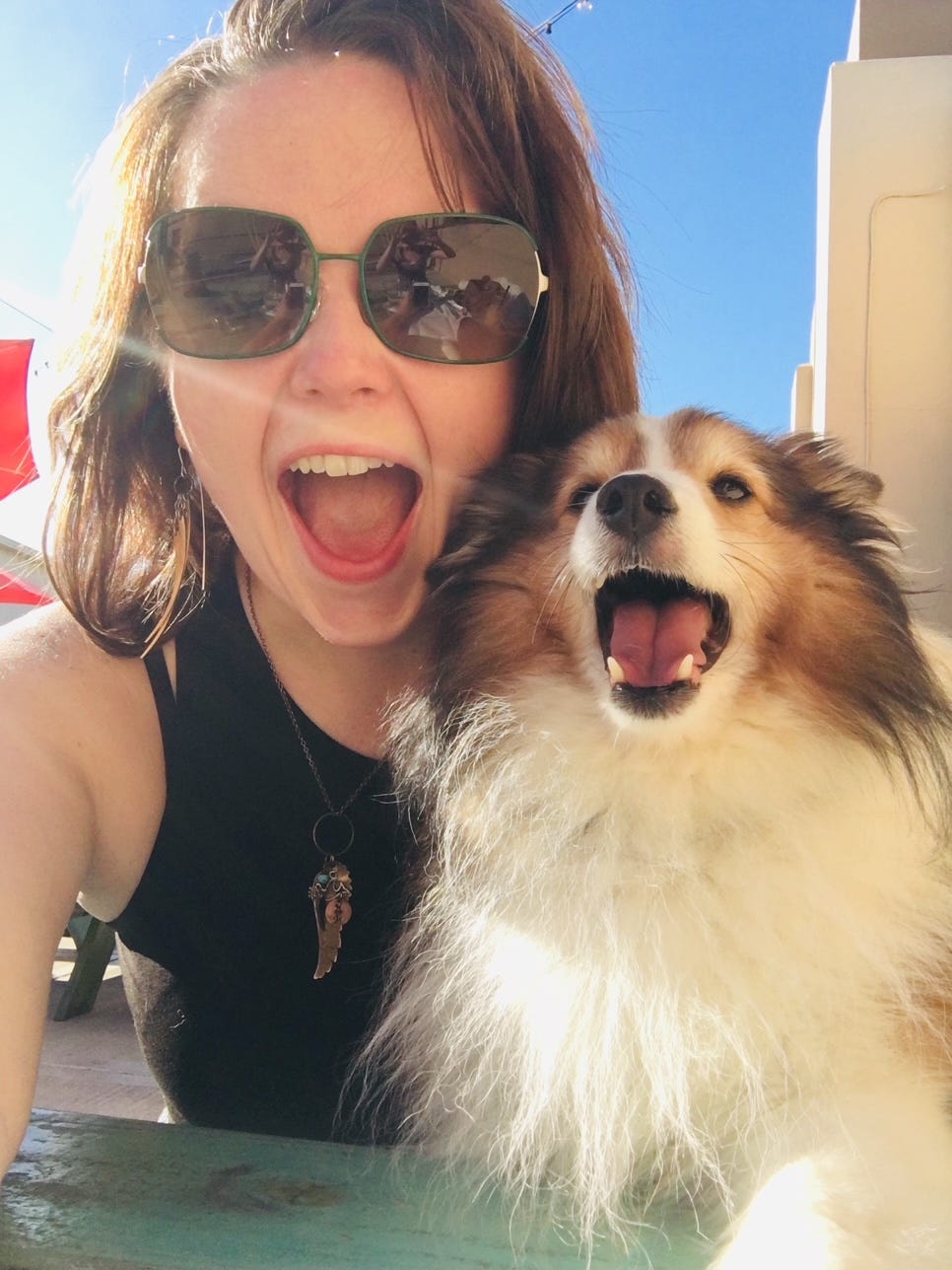Sammy was my first dog, a twelve-pound sheltie with a severe anxiety disorder and really bad skin. I got him on Craigslist back in 2012, when it was still sort of normal to meet someone from Craigslist in a park and exchange cash for a new best friend.
Being so small, everything was scary to Sammy, but the most terrifying was fireworks. July 4th and New Years Eve were the worst days of the year for us.
I tried everything to help him – Benadryl and Xanax, trazadone and gabapentin, thunder shirts and pheromone collars and Rescue Remedy. Nothing worked. My little guy spent those holidays shuddering in a tight corner, drooling from fright, refusing food and water until long after the last explosion faded.
If you’ve ever had a pup in a similar boat, you know how awful this feels. You want to tell him it’s going to be okay, but of course he doesn’t understand. You would do anything to make him feel safe, and the fact that there’s nothing you can do, is its own form of torture. For Sammy, the best I could do was curl up with him wherever he felt safest, and be with him until the terror passed.
The act of sitting with someone in their suffering without trying to take it away is called compassion. In fact, the Latin root of compassion translates literally to suffering with. But sitting with someone in their suffering without trying to solve it or drag them out of it is really hard. When you love someone, you want to protect them from pain. A lot of times that protection looks like advice (why don’t you try this?), platitudes (what doesn’t kill you makes you stronger!), or admonishments (well, maybe if you hadn’t…). If you’ve ever been on the receiving end of these reactions to your own suffering, you know how invalidating and shaming they can feel.
Sitting with someone in their suffering is also hard because it means you’re suffering too, which is why compassion is such a selfless act. You choose to put aside your own need to be helpful, to solve the problem, to make you both feel better. Instead, you choose to give space to what the other person is feeling. You sit quietly, your arm around their shoulder or your hand on their hand.
It feels like doing nothing. The silence feels awkward, your hand on theirs inadequate. You feel like you should say something. But communication goes far beyond words. When you sit with someone in those moments, you’re communicating that they’re not alone, that you’ll stay with them. Your simple, quiet presence tethers them to a point in the future when they won’t feel like this anymore. You make this moment more survivable because you’re carrying the weight with them. This is what it means to hold space for someone.
Sitting with Sammy was hard. My boy was so scared. I couldn’t make him feel safe, so I felt helpless. I just had to wait, my hand on his back or my arms around him, being with him through the night.
The night always ended. The fireworks always stopped, Sammy always dropped off to sleep, and the morning was always quieter.
If you’re one of my US readers, your pup may be in this boat tomorrow. Pants certainly will. We’ll be in this together, and then it will pass.










I remember sitting with a friend whose husband had died. He’d been gone six months and she was being told it was time to start dating. She was crying. I didn’t look away. It felt like nothing but was the best thing I could do, and more meaningful to her than anything I might have said.
What a beautiful comparison. As someone with an anxious but also very intuitive dog, I've been on both sides of the fence. She rescues me as much as I do her.
I admit that I could work on my compassion with humans a little more.